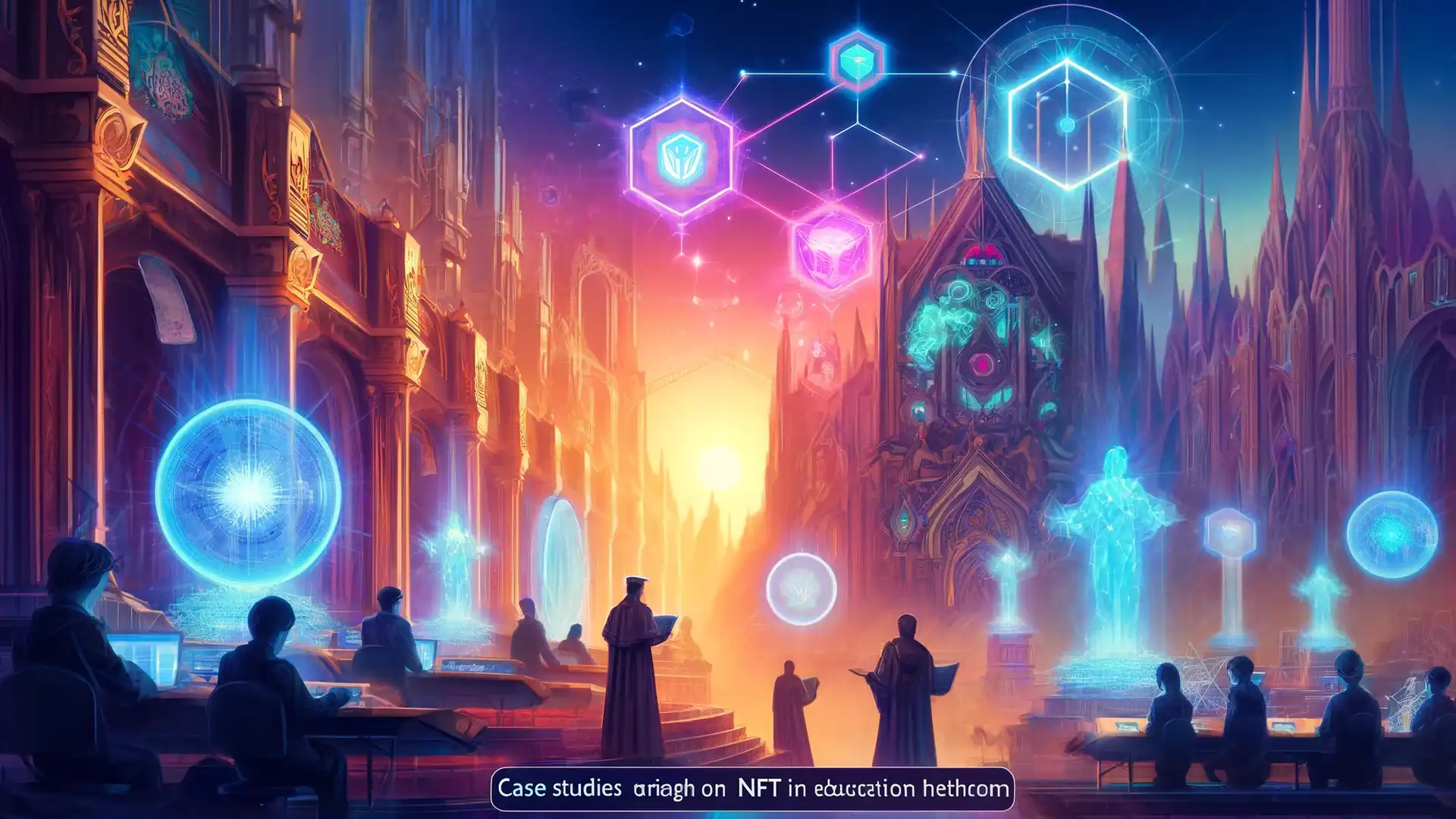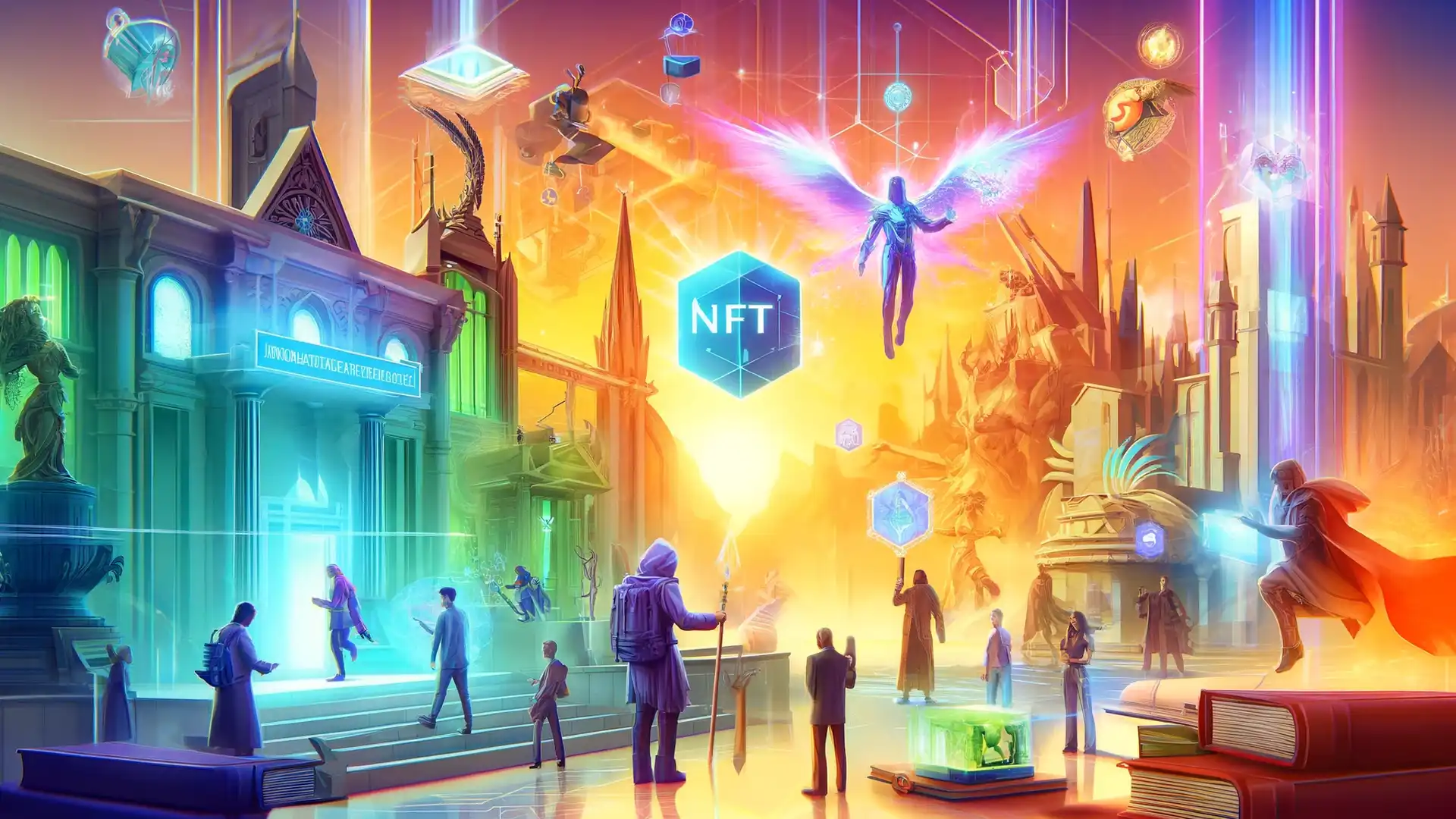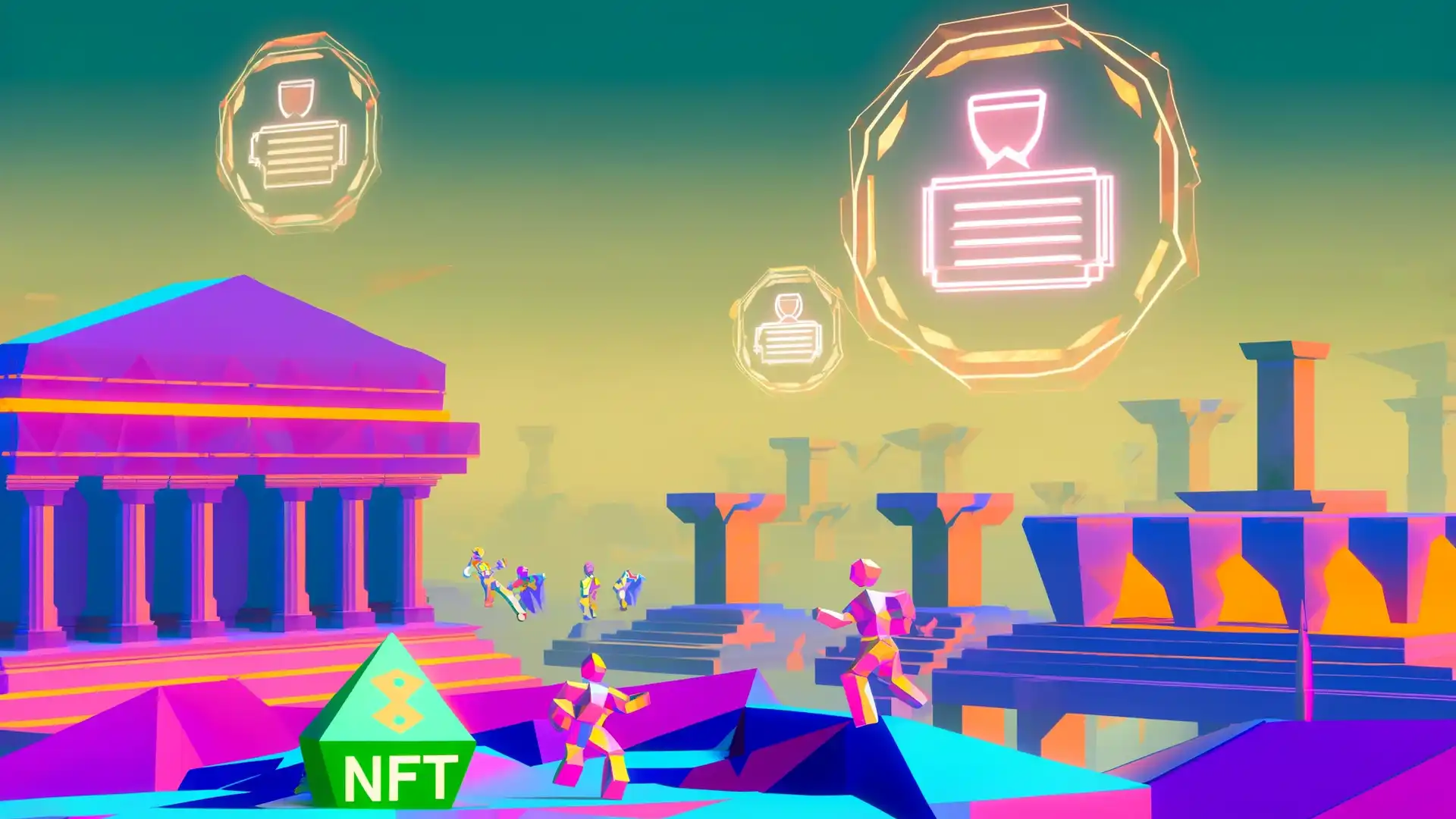Case Studies: Educational Institutions Using NFT Credentials and Blockchain

 Author:
Artem Grigoriev
Author:
Artem Grigoriev
Pioneering Digital Credentials: Insights from Educational Institutions Implementing NFTs
Welcome to a new era where your diploma is not just a piece of paper, but a digital token —a unique and permanent part of the blockchain. This transformative shift not only symbolizes academic achievements but also heralds a move towards innovative credentialing methods. This insightful chapter explores how Non-Fungible Tokens (NFTs) and blockchain technology are revolutionizing the management of academic records. NFTs are unique digital tokens that signify ownership and are not interchangeable like typical currencies. Blockchain is a decentralized system where each transaction is securely encrypted and linked to the previous one, making alterations nearly impossible. These technologies significantly enhance the integrity and authenticity of documents and drastically reduce the potential for fraud. The extensive potential of blockchain for securely managing educational records is well supported by a report from Forbes, which discusses blockchain's transformative impact across various sectors, including education. Forbes on Blockchain in Education
📘 This article complements: "The Complete Guide to NFT Credentials". Explore it to find answers to all your questions;)
Let’s start by examining the early adopters, such as the Massachusetts Institute of Technology (MIT) . MIT pioneered the use of blockchain to issue digital diplomas. This initiative greatly enhanced the security and immediate verification of credentials, offering graduates and employers a streamlined and efficient process without the usual delays. This breakthrough demonstrates how blockchain can provide a verifiable, tamper-proof record that is both accessible and secure. MIT's innovative approach is detailed in their case study, which outlines the practical benefits and logistical setup of their blockchain-based credentialing system. MIT Case Study
At Holberton School , the emphasis is on a student-centric approach. Here, NFTs are not merely digital versions of certificates; they empower students by granting them complete control over their educational records. This model enhances student privacy and autonomy and leads to a new method of managing and recognizing educational achievements. Holberton’s innovative use of blockchain to empower students is detailed in TechCrunch, which provides insights into the benefits and challenges of their system. TechCrunch on Holberton School
Meanwhile, the University of Nicosia has tailored its blockchain strategy to meet the needs of its diverse and global student body. By enabling digital verification of credentials, the university addresses a crucial need for international students, who often face challenges in proving their educational qualifications abroad. This case illustrates blockchain's ability to support educational mobility and cater to a globally dispersed student population. The University of Nicosia’s commitment to using blockchain for international credential verification has been recognized in academic studies and reports, highlighting its role as a leader in technological adoption in education. University of Nicosia Blockchain Initiative
💡 Note: Integrating blockchain in education involves more than just technological implementation; it represents a cultural shift towards accepting digital credentials as standard. This shift necessitates educating stakeholders about the benefits and ensuring the security and privacy of student data. It also prompts a reevaluation of how credentials are assessed in the job market, potentially affecting hiring practices and professional evaluations.

Despite the clear benefits, the journey towards digital transformation is not without challenges. The institutions discussed have encountered numerous obstacles, including the need for technological upgrades and resistance from traditional stakeholders. Integrating blockchain into existing IT infrastructures has presented significant technical challenges, requiring a thoughtful and strategic approach to ensure compatibility and functionality. It also demands ongoing training for staff and administrators to adapt to new systems, underscoring the importance of human factors in the adoption of technology.
Looking ahead, the potential for blockchain and NFTs in education extends beyond merely maintaining records. These technologies could revolutionize the credentialing landscape by enhancing how achievements are recorded and recognized globally. However, for these technologies to achieve their full potential, collaborative efforts are required, involving not only academic institutions and technology developers but also regulatory bodies to ensure that innovations align with educational objectives and uphold the highest ethical standards.
This exploration into the pioneering efforts of educational institutions in adopting blockchain and NFTs marks a significant evolution in credentialing processes. By learning from these trailblazers, other institutions can navigate the complexities of digital adoption, tailor these technologies to meet their unique needs and challenges, and prepare students for a digital future. This ensures that educational credentials remain valuable and relevant in an increasingly digital world.
💡 Tip: Institutions planning to implement blockchain for credentialing should begin with pilot projects. These projects allow for comprehensive testing and iteration to ensure that the technology aligns with institutional goals and student needs before full-scale implementation. These pilot projects should include feedback mechanisms from both students and employers, helping to refine the approach and ensure that the digital credentials meet market needs and expectations.

Overcoming Challenges and Shaping the Future of Educational Credentials with Blockchain
The integration of Non-Fungible Tokens (NFTs) and blockchain technology into the credentialing systems of educational institutions introduces complex challenges. At the same time, it creates unparalleled opportunities for innovation and enhancement. NFTs , each unique and irreplicable, serve as secure, digital proof of ownership that is immune to forgery. This makes them ideal for credentialing. Meanwhile, blockchain technology functions as a decentralized ledger that logs transactions across numerous locations, thereby eliminating any single point of failure and ensuring the integrity and security of the data. This chapter delves into both the hurdles and immense potential of these technologies .
It starts with the technical complexities encountered by institutions like the Southern Alberta Institute of Technology (SAIT) . SAIT involved costly and intricate adjustments to their established IT systems. However, these challenges also led to innovative solutions, including forming strategic partnerships with technology providers to ensure seamless, user-friendly implementations. Insights from IBM’s extensive research on blockchain implementation emphasize the crucial role of such partnerships in overcoming initial technological challenges. IBM Research on Blockchain Implementation
At Kingsland University - School of Blockchain , the focus extends beyond merely implementing technology to educating about it. The school has taken a proactive stance on user adoption by actively educating its community about the significant benefits of blockchain. This initiative serves as a prime example of effective change management. It demonstrates the critical importance of community involvement and support when introducing transformative technologies. Forbes highlights similar strategies in their coverage of educational blockchain initiatives, underscoring that educating users is key to widespread adoption. Forbes on Blockchain Education
The narrative then shifts to examining how students and employers perceive NFT-based credentials. Through surveys and testimonials, it becomes clear that there is considerable appreciation for the enhanced security and permanence that blockchain provides. However, there is also some skepticism concerning the recognizability and perceived value of digital credentials. This divide underscores the need for broader educational efforts and public awareness campaigns aimed at fostering a deeper understanding and wider acceptance of digital credentials. Data from a Pew Research study on digital credentials reflects these varying perceptions across different groups. Pew Research on Digital Credentials
💡 Note: The potential of blockchain in education extends beyond credentialing. It could potentially revolutionize aspects like enrollment, student records management, and even governance. The implications for administrative efficiency and transparency are profound, offering a clearer and more accountable framework for managing educational operations.

Looking forward, the potential applications for blockchain in education are expanding. Lifelong learning platforms and continuous professional development programs are just a couple of areas where blockchain can make a significant impact. By enabling secure tracking and verification of a wide range of educational milestones and professional achievements, blockchain technology supports more dynamic and ongoing learning paths. This flexibility allows for a more personalized and adaptive educational experience, potentially transforming how individuals engage with educational systems throughout their lives.
Furthermore, this chapter revisits the ethical considerations of using blockchain in education. It is crucial to ensure equitable access and prevent discrimination, as the potential of the technology could inadvertently lead to biases if not carefully managed. This section of the discussion emphasizes the importance of inclusive practices and ethical guidelines that should guide the implementation of blockchain technologies in educational settings, ensuring that the benefits are accessible to all students, regardless of their background.
In conclusion, the future of blockchain in education involves not just overcoming present challenges but also seizing opportunities for substantial innovation. This requires ongoing research and collaboration across various sectors, exploring new applications and meeting the evolving needs of educational institutions. As digital credentials become more prevalent, they pave the way for a more interconnected and technologically advanced educational landscape, setting a new standard for how educational achievements are recognized and utilized in the professional world.
💡 Tip: Educational institutions looking to adopt blockchain should consider phased rollouts and pilot programs. These programs allow for iterative feedback and adjustments, ensuring that the technology meets the needs of all stakeholders involved. These pilot programs can refine the application of blockchain in educational settings, enabling a smoother transition to new systems and minimizing disruptions to existing processes.

Opportunities for Students Using Educational NFT Credentials
Blockchain Overview for Creating Educational NFT Credentials
Best Practices for Storing Educational NFT Credentials
Compatibility of Educational NFT Credentials with Various Platforms
Designing Educational NFT Credentials: Ideas, Best Practices, and Examples
